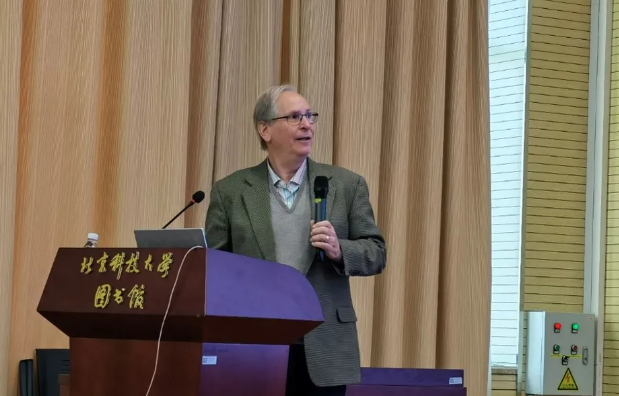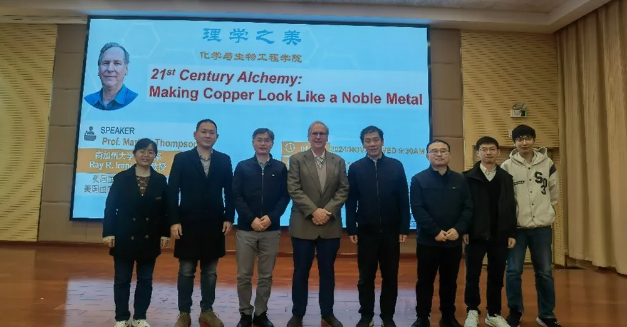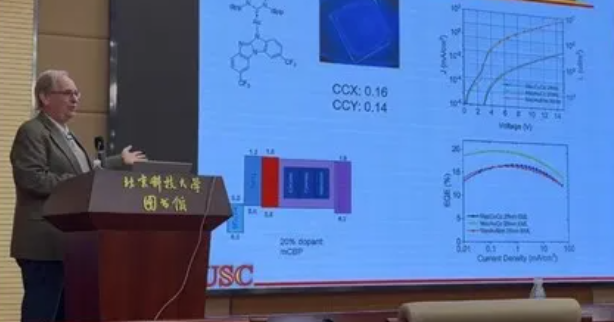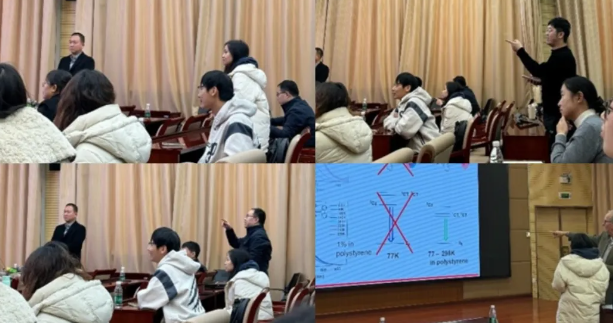A lecture by professor Mark E. Thompson on the "The Beauty of Science" Frontier Forum
On the morning of November 20th, 2024, Professor Mark E. Thompson, a member of the National Academy of Engineering and the National Academy of Inventors, and a professor in the Department of Chemistry at the University of Southern California, delivered a distinguished lecture at the "Beauty of Science" Frontier Forum hosted by the School of Chemistry and Biological Engineering. The event was organized by Professor Li Tianyi, and Professor Thompson's lecture was titled "21st Century Alchemy: Making Copper Look Like a Noble Metal." The lecture was held in the library’s lecture hall and attended by faculty and students from Peking University, Wuhan University, Hebei University of Technology, Beijing University of Technology, Beijing Information Science and Technology University, and the University of Science and Technology Beijing.

Before the lecture, Professor Li Tianyi hosted a brief meeting with Party Committee Secretary Guo Zhiheng and Vice Dean Professor Wang Dongrui to welcome Professor Thompson to the school for his academic visit.

In his lecture, Professor Thompson began by expressing his gratitude for the invitation and proceeded to share his groundbreaking research on the photophysics and electroluminescence of two-coordinate copper, silver, and gold complexes. He explained how these complexes exhibit high luminescence quantum yields and microsecond to sub-microsecond luminescence lifetimes. Notably, by modifying the ligands, it is possible to achieve a full spectrum of luminescence colors, ranging from violet to red. These photophysical properties are on par with those of noble metal phosphorescent complexes. Low-temperature measurements revealed that these complexes also demonstrate thermally activated delayed fluorescence (TADF) properties. Additionally, organic light-emitting devices (OLEDs) based on these complexes exhibit high luminous efficiencies at relatively low driving voltages. Professor Thompson also discussed the latest design models for these complexes and how to achieve rapid excited-state decay.

Professor Thompson’s presentation, delivered with clarity and depth, sparked engaging discussions among the audience. The Q&A session was lively, with teachers and students actively engaging in thought-provoking exchanges on various aspects of complex electroluminescence research.


